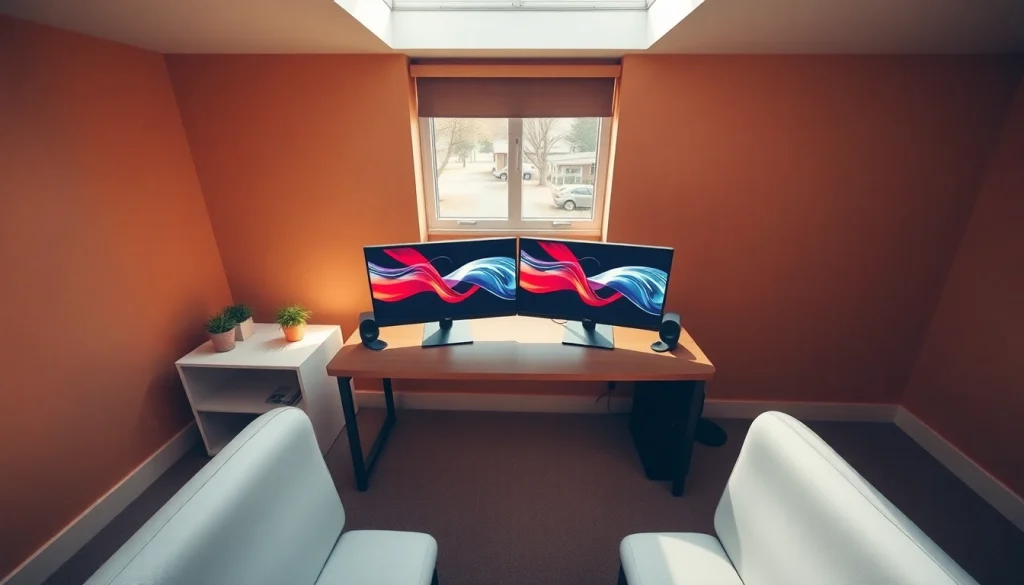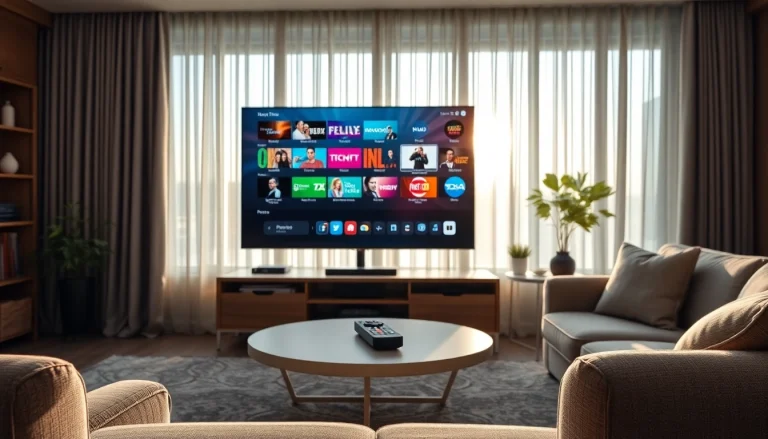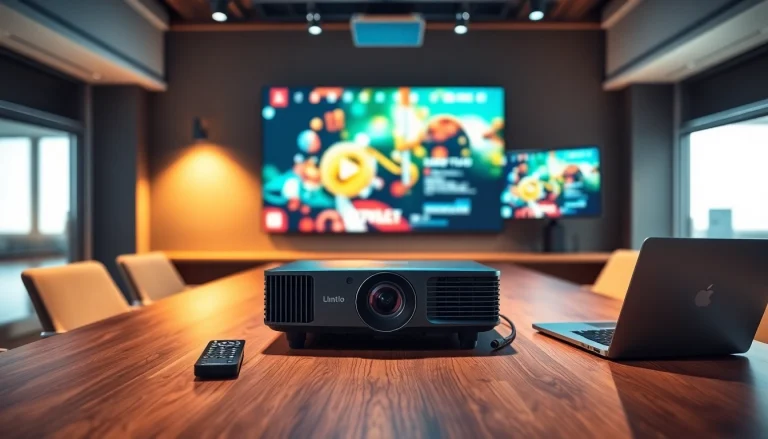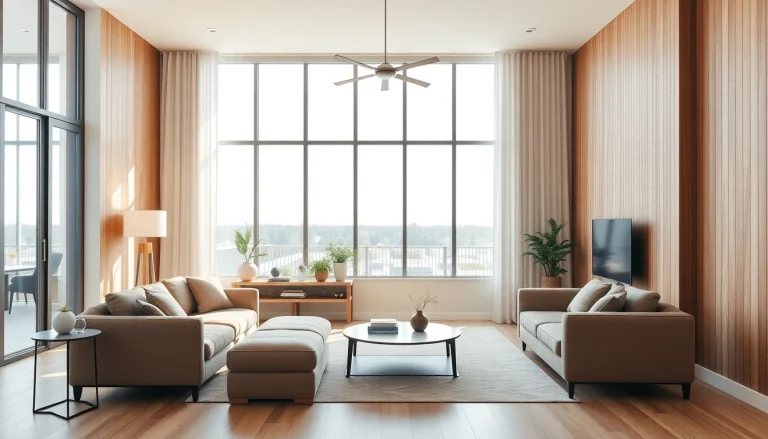
In today’s fast-paced digital world, maximizing productivity is essential for both professionals and home users alike. One of the most effective ways to enhance your work experience is through a dual monitor install. This setup allows for increased screen real estate, better multitasking capability, and a more organized workspace. Whether you’re working from home, gaming, or managing multiple applications, a dual monitor configuration can significantly transform your computing experience. This comprehensive guide will cover everything from understanding the basics of dual monitor installations to advanced optimization techniques.
Understanding Dual Monitor Install Basics
What You Need for a Successful Install
To successfully set up dual monitors, you’ll need a few essential components:
- Monitors: You’ll require two monitors. Ensure both have compatible ports (HDMI, DisplayPort, VGA) with your computer.
- Cables: You’ll need the appropriate cables for connecting your monitors (HDMI, DisplayPort, etc.). Ensure you have extras in case of failure.
- Graphics Card: A capable graphics card that supports multiple displays is crucial. Most modern cards do, but it’s worth checking.
- Desk Space: Adequate space to hold your monitors in a comfortable ergonomic setup.
- Software Compatibility: Ensure your operating system supports multiple displays (most modern versions do).
System Compatibility and Requirements
Before you proceed with the installation, it’s vital to confirm that your computing system supports dual monitor functionality. Here are some compatibility checks:
- Check your operating system: Windows, macOS, and Linux all have built-in support for multiple displays.
- Ports availability: Look at the back of your computer. Ensure that there are enough output options (like HDMI, DisplayPort, or DVI) to connect both monitors.
- Graphics capabilities: Use a program like GPU-Z to check your graphics card specifications and ensure it can handle the resolution and refresh rate you want to use.
Choosing the Right Monitors
Choosing the right monitors is crucial for an optimal dual monitor setup. Consider the following factors when making your selection:
- Size: Larger monitors will provide more screen space. Common sizes for dual setups range from 22” to 32”.
- Resolution: High-resolution monitors (1080p, 1440p, or 4K) can enhance clarity, especially when working with detailed applications or media.
- Panel type: IPS panels offer better color accuracy and viewing angles, while TN panels may provide faster refresh rates suitable for gaming.
- Wall Mounts or Stands: Ensure that you have adjustable stands or wall mounts to create an ergonomic setup.
Step-by-Step Process for Dual Monitor Installation
Preparing Your Workspace
Setting up your workspace before installation can save time and enhance ergonomics. Follow these steps:
- Clear your desk: Organize your workspace to allow sufficient room for both monitors.
- Position your monitors: Ideally, the top of your monitor screens should be at or slightly below eye level, approximately an arm’s length away.
- Consider cable management: Plan for how you will route your cables to avoid clutter and tangling.
Connecting the Monitors
Once your workspace is prepared, it’s time to connect the monitors:
- Power off your computer and both monitors.
- Connect the first monitor to your computer using the appropriate cable.
- Connect the second monitor using another available port.
- Secure the connections and ensure they are properly plugged in.
- Power on your monitors and then your computer.
Configuring Display Settings in Windows
After connecting the monitors, you’ll need to adjust your display settings:
- Right-click on the desktop and select Display settings.
- Scroll down to Multiple displays and select how you want to use the monitors – either as an extended display or mirrored display.
- If extending displays, arrange the monitor icons to match their physical positions on your desk.
- Adjust the resolution and orientation for each monitor as necessary.
- Click Apply to save your changes.
Troubleshooting Common Issues with Dual Monitor Setup
Resolving Display Detection Problems
Even with the correct setup, issues may arise where one or both monitors are not detected. Here’s how to troubleshoot:
- Ensure all cables are securely connected and not damaged.
- Check the power status of both monitors.
- Go to Display settings and click Detect.
- Update your graphics driver if the monitors still do not appear.
- Consider restarting your system or trying different ports if one monitor isn’t working.
Adjusting Resolution and Orientation Settings
Sometimes the monitors may display the wrong resolution or orientation. Adjust these settings by:
- Accessing the Display settings.
- Selecting the monitor you need to adjust.
- Changing the resolution to the recommended settings for optimal display quality.
- Choose the correct orientation (landscape or portrait) based on your preference.
Common Hardware Compatibility Issues
Older graphics cards may not support dual monitor setups. To address these common hardware concerns:
- Check the specifications of your graphics card to ensure support for dual monitors.
- If using an HDMI splitter, keep in mind it duplicates displays rather than extending them.
- Consider upgrading your graphics card if compatibility issues persist.
Optimizing Your Dual Monitor Setup for Productivity
Best Dual Monitor Configurations for Different Tasks
Different applications can benefit from unique monitor setups. Here are a few configurations:
- For Coding: Use one monitor for coding while placing documentation or design tools on another.
- For Gaming: Use one monitor for gaming while using the second for chat or live streams.
- For Graphic Design: Utilize one monitor for your design software and the other for reference images or tool palettes.
- For Office Work: Use one screen for email and communication tools while dedicating the second for documents and spreadsheets.
Software Tools for Managing Dual Displays
Managing dual monitors can be complex without the right tools. Consider using:
- DisplayFusion: This software allows you to manage multiple monitors easily, providing taskbar utilities and customizable wallpapers.
- Windows Snap: Windows 10 and 11 come with built-in snapping features that help you arrange windows efficiently on dual displays.
- UltraMon: Another great tool for enhancing multi-monitor setups, featuring taskbars and advanced window management features.
Creating an Ergonomically Friendly Workspace
Prevent strain and discomfort in your workplace setup through ergonomic practices:
- Position monitors at eye level to reduce neck strain.
- Keep monitors about an arm’s length away to minimize eye strain.
- Use monitor stands to adjust height as needed.
- Maintain a comfortable chair and desk height to promote good posture.
Advanced Tips for Dual Monitor Install
Using Multiple Operating Systems on Dual Monitors
For users needing to operate multiple systems, consider the following:
- Virtual Machines: Install virtual machine software like VMware or VirtualBox to run additional operating systems without needing separate hardware.
- Multiple Boot Setup: Create a boot option for multiple operating systems on your computer, allowing you to quickly switch between them.
- Share Monitors: Use software that allows you to control multiple OS setups via one set of peripherals.
Integrating Dual Monitors into Gaming Setups
For gamers, dual monitors can enhance the experience significantly:
- Use one monitor for gameplay and the second for browsing strategies or watching streams.
- For simulation games, utilize one monitor for the cockpit view while keeping map tools or stream chats on the other.
- Consider high refresh rate monitors to maintain smooth gameplay across setups.
Future-Proofing Your Dual Monitor Configuration
To ensure longevity and compatibility of your dual monitor setup, consider:
- Investing in a powerful graphics card capable of supporting multiple high-resolution displays.
- Keeping abreast of technological advancements in monitors, like OLED vs. LCD, to enhance color quality and efficiency.
- Regularly updating your software and drivers to avoid compatibility issues with new hardware or OS updates.






